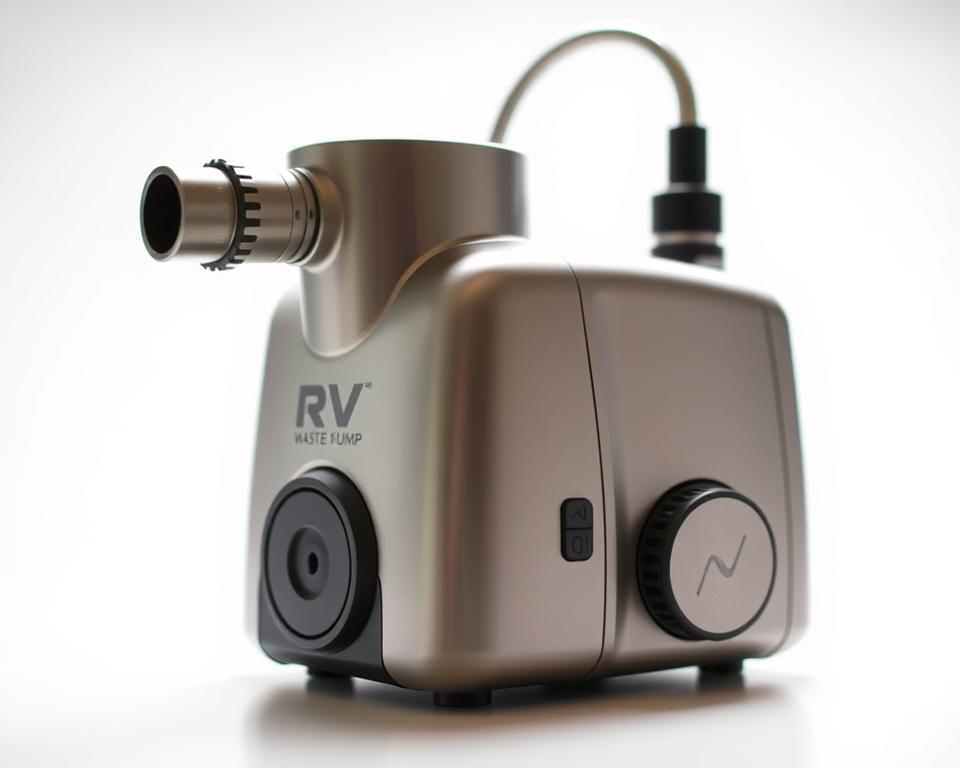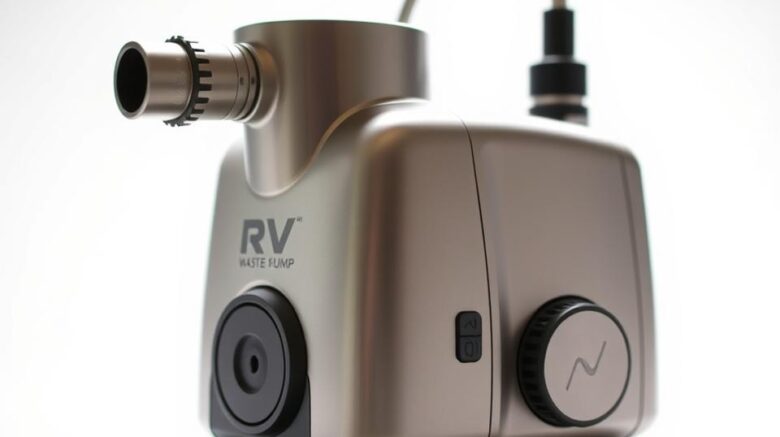Optimize Your RV Water System with a Pressure Tank
Have you considered the impact of an RV pressure tank on your camping trips? While journeying, your RV’s plumbing system becomes vital for daily activities like bathing and dishwashing. Fine-tuning this system ensures a smooth and continuous water flow, crucial for road life. Let’s dive into how an RV pressure tank can optimize your onboard water system – RV tank pumping service, heightening comfort during your adventures.
Key Takeaways
- An RV pressure tank enhances water flow as you travel.
- Dependable pressure matters for routine use.
- Refining your water setup ups campsite comfort.
- These tanks sustain uniform flow.
- Enhanced delivery benefits every fixture.
Why a Dependable RV Water System Matters
Dependable water flow makes camping hassle-free. It ensures daily tasks like showering, washing dishes, and using the toilet are trouble-free. Issues like low water pressure can disrupt these activities, underscoring the necessity of proper water flow in your RV.
Low water pressure can stem from multiple problems. Leaks, clogged filters, or insufficient water supply are common causes. Not only do these problems disrupt convenience, but they can also escalate into larger issues without timely intervention. Thus, regular upkeep is essential for a well-functioning RV plumbing system.
Important aspects of maintaining a dependable RV water system include:
- Regularly checking for leaks in pipes and connections
- Flushing or swapping out blocked filters
- Employing a water pressure regulator to safeguard against surges
Keeping these practices top of mind empowers RV owners to enhance their water flow. It makes the camping experience comfortable.

Defining the RV Pressure Tank
An RV pressure tank plays a crucial role in a recreational vehicle’s water system. It ensures water pressure remains even and dependable. This component stores and buffers water, making it available even when usage spikes. It avoids the inconvenience caused by pressure drops.
The design of an RV water pressure tank often features a bladder or diaphragm. This mechanism separates water from air, allowing for swift pressurization. Recognizing the function of a camper pressure tank works empowers RV owners to manage their plumbing. A quality motorhome pressure tank enhances water delivery’s reliability and efficiency.
How an RV Pressure Tank Enhances Water Flow
The pressure tank ensures steady delivery. It avoids flow drop-outs under simultaneous use. When faucets, showers, and toilets operate together, a pressure tank keeps the supply steady.
This tank reduces pump cycling, leading to higher efficiency. It stores pressurized air, pushing water through the system. This results in the water pump runs fewer cycles. The result? Saved energy and an extended water pump life.
With pressure tanks, campers benefit from steady delivery, enhancing their experience. No more weak streams or pauses. Knowing how a pressure tank works empowers users to avoid the hassle of varying water pressure.
| Feature | Benefit |
|---|---|
| Consistent Pressure | Provides reliable delivery for daily tasks |
| Less Pump Cycling | Lowers energy consumption and extends pump life |
| Quick Water Delivery | Speeds up usage at any tap |
| Simple Setup | Simplifies upgrades to the RV water system |
Benefits of Installing a Recreational Vehicle Pressure Tank
Adding a pressure vessel delivers multiple benefits. It leads to consistent water pressure, enhancing showering, cooking, and cleaning experiences. The absence of sudden water flow drops allows for smoother daily activities.
Another key benefit is the relief it offers your water pump. By maintaining even pressure, the tank extends the pump’s lifespan and reduces service calls. This results in noticeable maintenance cost savings and less inconvenience over time.
Efficient water use is also a major plus. It helps avoid issues such as drips and bursts. These tanks boost plumbing system reliability, ensuring hassle-free trips. With proper setup and maintenance, they bring assurance and comfort.
How to Select the Best Pressure Tank
Choosing the correct RV pressure tank requires thought on many aspects to match your RV water system’s needs. Start by evaluating tank capacity. RV pressure tanks vary in size; knowing how much water you use will help choose appropriately.
Material choice affects lifespan. Tanks constructed from stainless steel or polyethylene offer superior toughness. It’s crucial to select a tank that fits your needs and endures travel.
Bladder designs excel when considering options. They efficiently maintain pressure and reduce water hammer. Checking model specifications ensures compatibility with your system.
Getting advice from RV experts is beneficial. They ensure the tank works well with your RV’s plumbing, so you pick a tank that delivers satisfaction and efficiency.
How to Fit the Pressure Tank
Fitting a tank transforms your plumbing performance. It’s important to pay close attention and know RV plumbing basics. Start by picking the right spot for future maintenance.
Next, fasten the supply and return lines tightly. Ensure all joints are sealed. A key part is verifying the air pressure inside the bladder, which is essential for optimal performance.
When unsure, hire a qualified technician, like those at All in Sanitation. Their expertise ensures correct setup, boosting your system’s flow and reliability. Always follow the instructions for long-term performance.
| Installation Steps | Notes |
|---|---|
| Choose Position | Ensure room for maintenance |
| Attach Lines | Secure inlet and outlet to avoid leaks |
| Verify Precharge | Match manufacturer specs for best performance |
| Follow Recommendations | Don’t skip any steps |
| Seek Professional Help | Ensure proper setup |
Pressure Tank Maintenance Tips
To maximize lifespan, maintain regularly. Monthly leak inspections are essential to prevent water waste and ensure air pressure settings are correct. Additionally, check and clean filters regularly.
A clear filter keeps water moving freely. An annual review is advisable to assess the tank’s performance and the associated plumbing. Documenting maintenance makes tracking easier.
By keeping your system in top shape, you ensure a consistent water supply, making every trip more enjoyable.
| Task | Frequency | Details |
|---|---|---|
| Check for Leaks | Monthly | Look for drips or moisture |
| Air Pressure Check | Every Month | Use a gauge |
| Filter Maintenance | Every 3 Months | Remove debris and flush filter |
| Annual Check-up | Yearly | Conduct a full system inspection |
Advanced Pressure-Enhancing Techniques
Implementing strategic practices can significantly improve RV water pressure. A water pressure regulator is key, as it maintains steady flow and prevents damage from pressure surges.
Improving pressure also involves limiting simultaneous use of water fixtures. Stagger usage, for example, shower or sink at different times.
Quick showers help stabilize flow. This conserves water and stabilizes pressure, improving overall performance.
A clean filter is essential. Don’t let debris choke your system. Regular maintenance ensures optimal performance.
Regular checks of the water heater bypass valve are essential. A working bypass enhances performance, boosting the camper’s water system.
| Tip | What to Do | Impact on Water Pressure |
|---|---|---|
| Pressure Limiter | Prevent spikes | Keeps stress off fixtures |
| Stagger Usage | Avoid simultaneous outlets | Improves pressure for prioritized needs |
| Quick Rinses | Keep showers brief | Stops pressure from dropping |
| Filter Flushing | Ensure the filter is free from debris | Maximizes water flow |
| Check Bypass Valve | Test the bypass valve | Enhances overall efficiency |
Final Thoughts
Recognizing the significance of the RV pressure tank is vital for enhancing your RV water system. It ensures a constant water flow and adequate pressure, making trips more comfortable. This reliability turns camping into stress-free outings.
Proper setup and upkeep maximize gains. Regular maintenance helps avoid disruptions in your water supply. Implementing water pressure strategies further ensures a flawless system.
Applying these tips guarantees worry-free water use. You can enjoy your time outdoors without concerns over water quality or supply. Enjoy your journeys with peace of mind!
